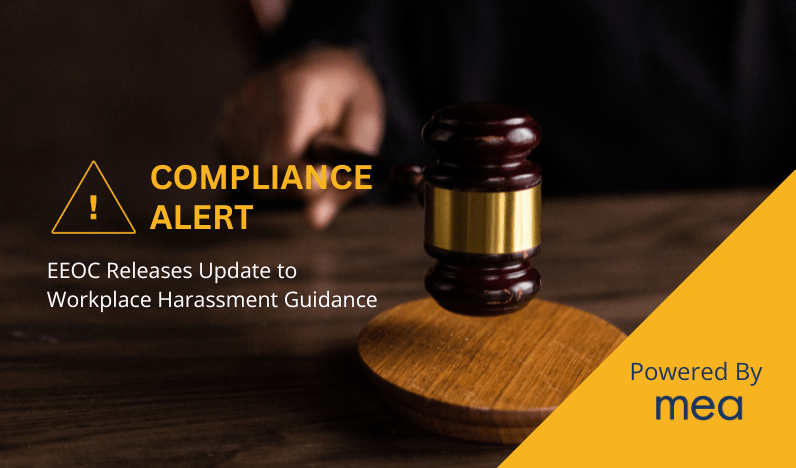On April 29, 2024, the Equal Employment Opportunity Commission (EEOC) released a long-anticipated update to its enforcement guidance on harassment in the workplace. The update comes almost 25 years after EEOC last published guidance on this topic and recognizes significant changes in harassment law since that time.
The guidance focuses on legal analysis of harassment and the standards for imposing employer liability for harassment based on the statutes enforced by the EEOC. The guidance states that it is intended to “protect covered employees from harassment based on race, color, religion, sex (including pregnancy, childbirth or related medical conditions; sexual orientation; and gender identity), national origin, disability, age (40 or older) or genetic information.” In the guidance, the EEOC reminds employers that they are responsible to prevent harassment of their employees not only by supervisors and coworkers, but also by third parties, such as customers, clients, and vendors.
Sexual Orientation and Gender Identity
In the guidance, the EEOC highlights a number of recent, notable changes in the law, including the 2020 United States Supreme Court decision in Bostock v. Clayton County, where the Court held that Title VII’s prohibition on discrimination “because of sex” includes discrimination on the basis of sexual orientation and gender identity. The guidance states that the following behaviors, if sufficiently severe and pervasive, may rise to the level of actionable harassment:
- Epithets or physical assault based on sexual orientation or gender identity;
- Outing (disclosure of an individual’s sexual orientation or gender identity without permission);
- Harassing conduct because an individual does not present in a manner that would stereotypically be associated with that person’s sex;
- Repeated and intentional use of a name or pronoun inconsistent with the individual’s known gender identity (misgendering); and
- The denial of access to a bathroom or other sex-segregated facility consistent with the individual’s gender identity.
Pregnancy, Childbirth, or Related Medical Conditions
The guidance states that harassment based on pregnancy, childbirth, or related medical conditions “can include issues such as lactation; using or not using contraception; or deciding to have, or not to have, an abortion,” if that harassment “is linked to a targeted individual’s sex.” The new guidance offers multiple hypothetical examples of such harassment, including a situation where employees make negative comments about a pregnant employee who is allowed to “telework up to three days per week and utilize flexible scheduling” as an accommodation for “pregnancy-related morning sickness.” Another example is a situation where negative comments are directed toward a female worker who expresses milk in the lactation room at work and other inappropriate behavior, namely a male worker knocking on the door of the lactation room and feigning intent to enter the room.
Virtual Harassment is Still Harassment
While it has always been true that harassment can occur virtually, including online, through social media or through electronic communications such as email, instant messaging and video conference, the guidance’s emphasis on this point recognizes the realities of a post-COVID landscape, and the related increase in remote work and online communication. The guidance confirms the EEOC’s position that unwelcome conduct based on a protected category that is communicated electronically may be considered harassment.
What Should Employers Do in Response to the Guidance?
Barring judicial intervention, the new guidance is effective immediately and communicates the EEOC’s position regarding conduct and behaviors the EEOC believes constitute unlawful harassment. Moving forward, employers should refer to the EEOC’s new guidance to help ensure that their workplace harassment policies, complaint procedures and employee training programs are current.
Employers with questions about the EEOC’s workplace harassment guidance or any employment law legislation should consult with experienced human resources professionals and/or labor and employment counsel. For all MEA Members, the Hotline is available to provide this assistance. For MEA Essential and Premier members, a Member Legal Services attorney is available for additional consultation.
Who is MEA?
MidAtlantic Employers’ Association delivers comprehensive HR-driven business solutions designed to help companies grow. Whether you need support for a single project or complex issues, you have access to seasoned professionals who are experts in their fields and dedicated to serving you well. Our collaborative, accessible, and responsive nature allows us to help you find solutions aligned with your goals. Whatever your goals are, we can help you develop better people and better outcomes so they can be achieved.
To learn more, contact us today to schedule a consultation, help us understand your needs, and learn how we can help.
*This Alert is provided for general informational purposes only and does not constitute legal advice.

